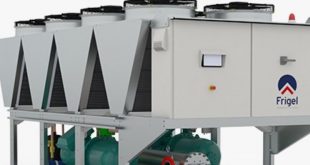New regulations will drive up the costs of units and refrigerants.
By Ben Lieberman May 6, 2024 2:03 pm ET
Your next new home air conditioner could set you back $12,000 or more, with federal regulators contributing to the rising cost of staying cool.
Before 2020, buying and installing a new residential central air conditioner typically cost well under $10,000. Many jobs, including both purchase and installation, fell in the $6,000 to $7,000 range—about half the current price—says Martin Hoover, a co-owner of Atlanta-based Empire Heating & Air Conditioning.
While many factors, including rising material costs, have contributed to the increase in prices, regulations have played an outsize role. The Energy Department in January 2023 issued a new efficiency standard for residential systems. It necessitated a major redesign that increased costs by $1,000 to $1,500, according to Mr. Hoover. DOE bureaucrats say the regulation will deliver net benefits for homeowners, but it isn’t clear that consumers will ever earn back in long-term energy savings the steeper upfront costs they’re paying.
Next up is an Environmental Protection Agency regulation scheduled to take effect in 2025. It will require air-conditioning equipment makers to use new refrigerants deemed sufficiently climate-friendly. The only refrigerants being used by manufacturers that meet the EPA’s new green standards are classified as mildly flammable. Would-be buyers of these new units may worry about safety, but the bigger issue is cost. Sensors will need to be included in equipment operating with flammable refrigerants to detect leaks and shut off systems as necessary.
In response to questions from investors, manufacturers in earnings conference calls have estimated that the price of compliant equipment will increase at least 10%—hundreds of dollars per system.
Equipment prices are only part of the picture. The switch to flammable systems will also require additional technician training and extra installation steps that are likely to increase labor costs for installations and repairs.
The sticker shock of a new system may induce many homeowners to maintain their old ones for longer, but there’s no escaping the growing web of costly red tape. Even if you hold on to your older system, a refrigerant leak would require a recharge with replacement equipment made more expensive by federal limits on supplies. Such repairs cost $400 to $500 more today than a few years ago, according to Mr. Hoover. Inflation is partially to blame: Rising salaries for service technicians, along with higher vehicle and insurance costs, have contributed.
Despite the worrisome trends, federal regulators have shown no signs of letting up, especially now that air conditioners are in the crosshairs of the Biden administration’s obsession with climate change. Team Biden seems to think that affordable air conditioning is one more thing homeowners may have to sacrifice to save the planet.
Mr. Lieberman is a senior fellow at the Competitive Enterprise Institute.

 News Chicago Business, Info & Events
News Chicago Business, Info & Events








